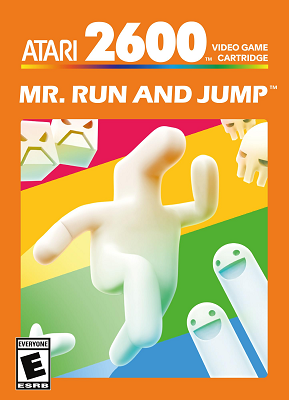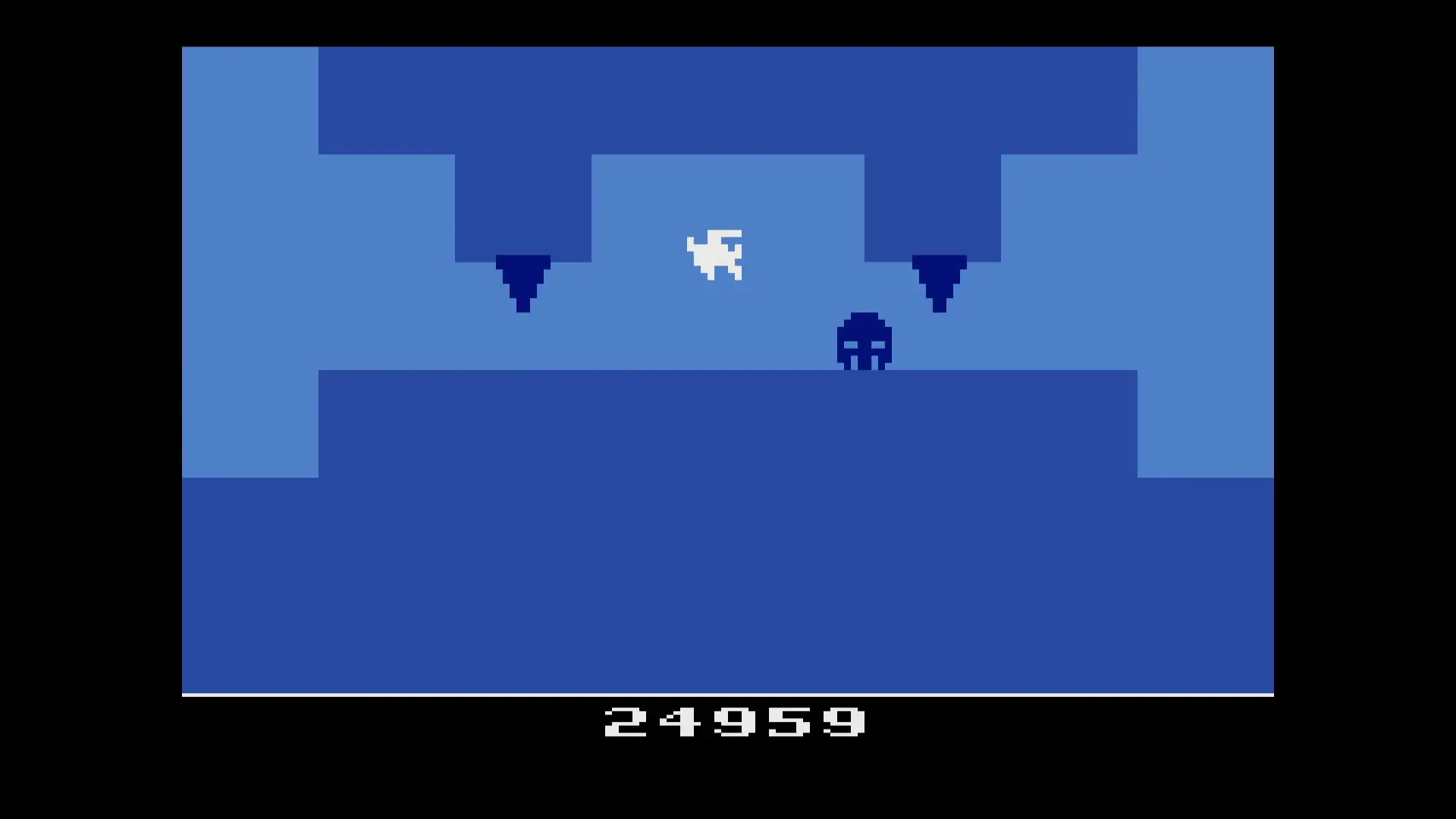GAME CLEAR No. 181 -- Mr. Run and Jump
video games game clear atari atari 2600Mr. Run and Jump (2023, Atari 2600)
Developer: John Mikula
Publisher: Atari
Clear Platform: Sears Video Arcade II
Clear Date: 7/17/24

| Why should I care? |
|---|
| The first 2600 game published by a company calling itself Atari in over 30 years is worthy of celebration, especially since it’s a genuinely excellent precision platformer. |
Run and jump, man.
The incredible amounts of reverence the company currently calling itself Atari has for Atari’s legacy is really something. See, the company known as Atari these days is just Infogrames wearing the skin of the Atari IP rights it acquired some decades ago. Over the past several years, it has spent a great deal of effort cranking out modern, budget-title interpretations of old Atari classics under the Recharged label, making the HDMI-capable Atari 2600+, arguably the coolest of any of the mini consoles anyone has made, and publishing the wonderful Atari 50 compilation. I think a lot of what they’ve put out has been worthwhile, but it all seems to go back to this notion that “hey, isn’t it cool that we made the 2600 and some great arcade games over 40 years ago?”
And yeah! It is cool. But what have you done for me lately? In the new IP department, Atarigrames has been pretty lacking.
Enter, I suppose, Mr. Run and Jump. Developed as a homebrew side project by one John Mikula, the game was turned by Atari into an official, ESRB-rated, cartridge release for their old workhorse Video Computer System. It also got a companion game for modern platforms under the same name that seemingly imagines what the same concepts would look like with today’s computing power, etc. It was developed by game studio Graphite Lab, where Mikula’s day job is.
That game looks neat, but this is about the 2600 version. Last year, I developed an awful lot of affection for the platform both by playing more of its influential library and becoming a new homebrew developer for the platform myself. I thought it was pretty neat that Atari was publishing this little game, so I preordered myself a copy.
On that purchase, I feel somewhat burned. First of all, I bought the “Limited Edition,” which was posted for sale with no indication that a standard edition would follow. It was more expensive than the standard version and for reasons completely unclear to me, seemed to ship significantly later after lots of inexplicable delays? It also cost substantially more, and perhaps most insultingly of all, seems to be an identical product except for its silver box and label (as opposed to the orange pictured above). I think the whole thing sucked as a consumer, so I’m not sure I’ll take them up on any further offerings.
Nevertheless, when my copy finally arrived, I was damn sure gonna play it. I put it in my Sears Video Arcade II (a rebranded Atari 2800), to give it a spin. After first just giving it a quick whirl to make sure it worked, I returned later and beat it in one long sitting.

That’s because this shit is hard! It’s a real tough-as-nails platformer that demands focus and determination. But it’s all worth it, since the reason Mr. Run and Jump is running and jumping to begin with is to track down his dog, Leap, who was last seen wandering toward the Dark Realm, from which he cannot return without assistance.
For obvious technical reasons, the game built on a small set of fundamental challenges that Mr. Mikula mixed into nearly every possible combination. Environmental hazards include spikes and bottomless pits, and a number of enemies make negotiating those all the more difficult. There are thwomp-like enemies that fall from above, skull enemies that move side-to-side, little faces that pop out of the ground at timed intervals, and more. Contact with any enemy or hazard means instant death, so their rudimentary natures don’t make them any less of a threat. Additionally, the game is split into 6 stages, all of which are checkpoint-free. If you die at the very end of a stage, you go all the way back to the start of that stage. This makes each level a stout challenge indeed.
And man, if you’re into that sort of thing, it’s awesome how well it works on the little ol’ 2600. As I’ve mentioned in previous posts, the very nature of the hardware means the game must run at a locked 60 frames per second. There’s no frame buffer to allow the game to slow down the way some old NES games would chug along when things got too busy. That means this game plays and feels great, even if its action is somewhat simple.
Aesthetically, it sort of feels liked a pared-down VVVVVV (even if it lacks the killer soundtrack thereof). I get a real kick out of it because it shows just how abstracted the platforming experience can be without really losing any of the fun factor. With just a joystick*, a single button, and some minimally defined obstacles, you can create something that’s a lot of fun to navigate.
And it would’ve been fun enough if that’s all it offered (that is, a series of fun things to jump over and around), but in its sixth and final stage, things take a surprising turn. In this stage, the whole world is pitch black. Platforms cannot be differentiated from the darkness. The only things that are visible are enemies/hazards and Mr. Run and Jump himself. At first this seems like an insane and annoying prank on the player, but after you poke around a bit, you realize there is a bit of a language the game is trying to speak to you with in these stages. Spikes, for example, always exist over open air, so you know to jump if you’re above them. Other things like that become clear, and as you learn to challenge your assumptions about just holding right to proceed, eventually you’ll work your way through the Dark Realm and be reunited with your dog. It’s a satisfying change of pace after a very challenging but traditional 5th stage.
Mr. Run and Jump really just delighted me on all levels. It may not be the most quintessentially 2600 game out there (it’s a subgenre that didn’t exist in the heyday of the 2600 and a genre that only really took off in the NES years), but that’s okay. It’s yet another neat demonstration of what the platform can do.
And I’m pleased to say I’ve written the first few lines of code of what will be my next 2600 game. I just can’t quit it.
* As a side note, I did not use the standard Atari joystick to play through this game. I generally think that thing is kind of a mushy-feeling piece of shit, even if I find it aesthetically pleasing. Instead, I used the recently reissued CX78 gamepad that Atari originally made in the 7800 days. I just want to remark on its kind of insane design. In that image, the joystick stalk you see actually screws in to the d-pad in case you prefer that joystick feel. Much to my surprise, I did? I found it shockingly precise and nice-feeling. A nice, very silly looking controller, that one.